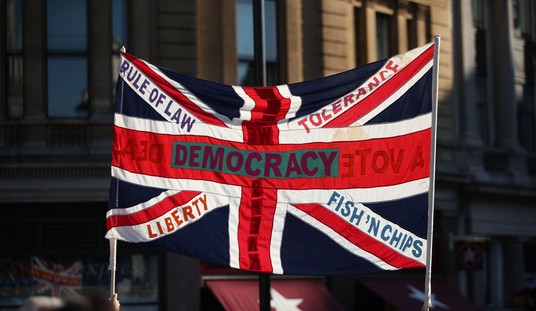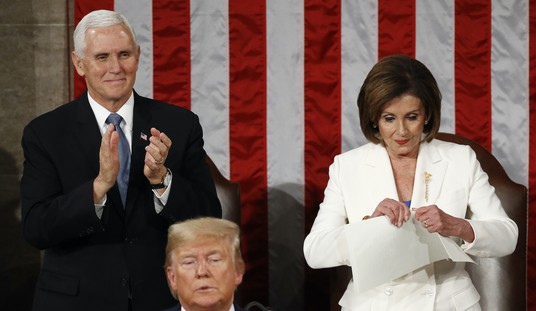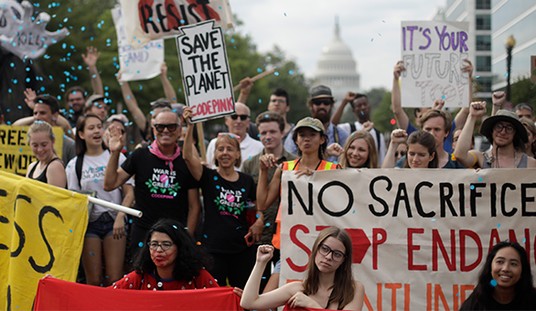The GOP primary map presents different challenges for [mc_name name=’Sen. Marco Rubio (R-FL)’ chamber=’senate’ mcid=’R000595′ ] and [mc_name name=’Sen. Ted Cruz (R-TX)’ chamber=’senate’ mcid=’C001098′ ], as it presents Cruz with a strong opportunity for an early knockout blow, and Rubio with better odds of winning if the nomination devolves into a long march for delegates. The Cruz path to victory is fairly easy to describe, as it starts with winning Iowa and South Carolina – which effectively neuters Donald Trump – and then sweeping the Southern and other deep-red states on March 1. But let’s take a more detailed look at what a Rubio scenario would look like.
For the past few months, I’ve shared the view of a number of people here and elsewhere on the Right that the real GOP primary contest is essentially a two-horse race between Rubio and Cruz, with Rubio as the logical favorite due to his tremendous political talent and the fact that Rubio is – while more conservative than any GOP nominee since Reagan – closer to the political center of the party than Cruz. While the past few weeks have been bumpy ones for both Cruz and Rubio, on the whole I agree with Erick’s list of reasons why they have improved Cruz’s odds and put Rubio in a tougher position.
But there is still a lot of road ahead. I ran through the GOP primary calendar using RealClearPolitics’ interactive tool, which is great but also time-consuming. I won’t bore you with the vote totals for each state, although if you use it yourself you will see that they matter a good deal to delegate allocations. I should stress that what follows is not an exercise in prediction, and that a lot can still happen between now and the Iowa Caucus on February 1. This is obviously a somewhat optimistic hypothetical scenario for Cruz, and a more strongly optimistic hypothetical scenario for Rubio, but I think it is an entirely plausible one if we consider the history of two-horse races like Obama vs Hillary in 2008 and Ford vs Reagan in 1976, both of which ended with each candidate solidifying a distinct geographic and demographic base of support. If you go back and look at my prior roundup of the calendar, you’ll see how it interacts with the delegate-allocation rules and open vs closed primaries.
Working off the current polling for the first two states in particular, I start with Cruz-Trump-Rubio-Carson in Iowa, Trump-Rubio-Christie-Cruz in New Hampshire, with Rubio a fairly distant third in Iowa and Christie a fairly close third in New Hampshire. This, the conventional wisdom properly tells us, is not great news for Rubio, but he’s still in the game. Huckabee and Santorum drop out after Iowa, Kasich and Fiorina drop out after New Hampshire, Pataki and Gilmore…ah, who am I kidding it doesn’t matter what they do. Cruz then wins South Carolina, and that’s where he really breaks Trump’s back; Rubio runs a close third, Christie and Carson and Jeb and Paul all finish pretty far back.
South Carolina has been – besides Newt beating Romney in 2012 – the traditional “decider” state, and Jeb being nothing if not a guy who knows the traditions, gives up the ghost. Rubio then pulls out a strong win in Nevada – it increasingly looks as if this will be the state he really needs in the early going to stay credible (if he gets out-organized by Cruz in Nevada, this whole scenario starts looking a lot more speculative) – and six candidates enter the Super Tuesday “SEC Primary”: Cruz, Rubio, Trump, Christie, Carson and Paul. Rubio wins easily in Massachusetts and Vermont and pulls out Alaska and Minnesota, runs very close in Tennessee and Virginia (really, I’m probably being generous to Cruz giving him Virginia), but Cruz wins huge in Texas and sweeps the other states voting that day. At the close of the day, the map looks like this, prompting Christie and Carson to exit the race (the shaded candidates are the ones who had already dropped out):

Kansas, Kentucky, Louisiana and Maine vote on March 5; with only four candidates left in the race, home state voters give [mc_name name=’Sen. Rand Paul (R-KY)’ chamber=’senate’ mcid=’P000603′ ] a win in Kentucky, Rubio continues to outpoll Cruz in New England and wins Maine, and Cruz takes the other two. This would be the point where Trump tires of campaigning to win 20% of the vote and third place, and throws in the towel. Paul, who is running just to keep the family organization alive and stay on the debate stage, is happy to stay in the game a bit longer getting a lot of 7-8% type showings. Rubio wins Puerto Rico, Cruz takes Idaho and Mississippi, and most crucially we come to Michigan on March 8 and that is where the race really starts to turn in Rubio’s favor. Here’s the state of play on March 11 – Cruz has won 14 of 25 primaries/caucuses to Rubio’s 9, but he has only a 378-351 lead in delegates:

By the end of March, that has flipped to nearly a 100-delegate lead for Rubio after he wins Florida, Ohio and Illinois on March 15, while Cruz is taking North Carolina and Missouri. On March 22, Rubio wins Utah, Cruz takes the bigger delegate prize with a thumping win in Arizona.

Cruz takes North Dakota on April 1, but Rubio again claims the larger share of a big Midwestern prize, Wisconsin. With a two-week break between Wisconsin and New York and the need to get his Senate race in place, this is where Paul gets out and lets it go to a two-man race. Rubio sweeps the Northeastern states in late April, including Pennsylvania, and now has a lead of nearly 200 delegates (counting Colorado, although that’s a little fishy here because technically its delegates are not bound by the vote), but is still well short of the finish line:

Reagan in ’76 and Hillary in ’08 both rode late momentum to an eventual defeat, sowing a good deal of intra-party bitterness along the way, but Reagan ended up the President four years later; Hillary, eight years later, stands as her party’s prohibitive favorite. Cruz, even with diminishing momentum, decides to play out the string; he’s young, he had plenty of enemies in the party before the race started anyway, and a close second after a full 50-state campaign still elevates his stature in the party. He stages a rally in early May, winning Indiana, Nebraska and West Virginia, while party bigwigs fret and wring their hands. But Rubio wins in blue territory again, in Oregon and Washington, heading into the last day of voting on June 7:

Rubio closes the deal by winning California, New Jersey, and New Mexico, while Cruz wins Montana and South Dakota:

There are 138 of what you might call superdelegates who aren’t committed until the convention. In a tight race, they’d likely go with their states unless someone like Trump (by which I mean, just Trump) was the winner. In this scenario, under a lot of pressure to get a nominee, they all line up for Rubio:

Amusingly, that assumption leaves him one delegate short, and he can call even Jeb or Carly (or Chris Christie) for support to put him over the top; at any rate, even a Cruz-Trump-Paul alliance cannot stop him.
Is this the most likely scenario? Almost any scenario at this point seems wild and unpredictable, and I’m sure you can quibble with any number of the possible assumptions here. If Rubio finishes third in New Hampshire, third or fourth in Iowa and South Carolina and second or third in Nevada, he may find himself too far back to stage the post-March 1 comeback his likely strategy envisions.
It remains ironic that Rubio, having built his career in Florida as a conservative insurgent and scourge of the Charlie Crist establishment, is likely to find himself in a position where his path to the nomination will require courting moderate voters and winning blue states in the Northeast, Midwest and West Coast. And of course, the whole map looks different if we are assuming that there’s a race into mid-March that isn’t predominantly a Rubio-Cruz matchup.
If there’s one thing to take away from all this, it’s that the path to the GOP nomination runs through the Midwest. If one candidate can win Ohio, Michigan, Pennsylvania, Wisconsin and Illinois, that candidate will be very hard to beat. If you are Ted Cruz, your goal should be to make sure that the one candidate who could really threaten to beat him there by unifying moderate and establishment voters and winning a critical mass of conservatives has already been put out of commission by March 8. And that, as much as anything, is why Rubio and Cruz are at each other’s throats right now.













Join the conversation as a VIP Member